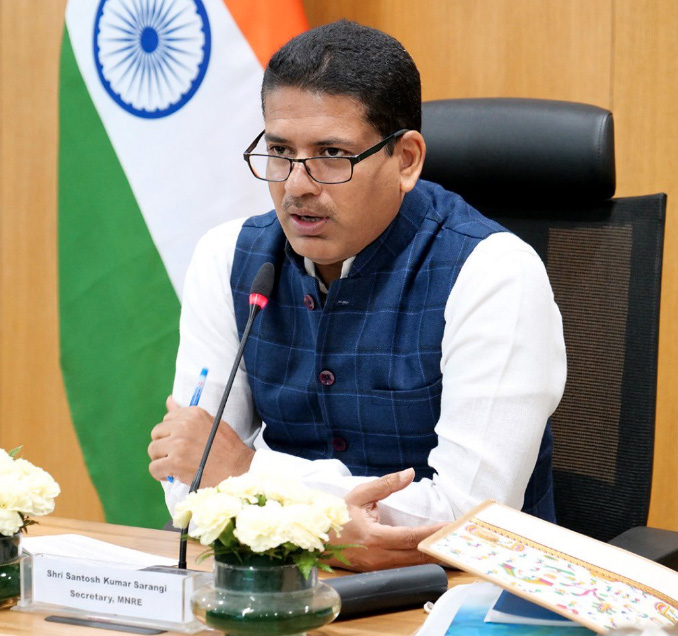New Delhi: India’s wind energy sector is experiencing a significant uplift, with a strong focus on both onshore expansion and pioneering offshore breakthroughs. The Ministry of New and Renewable Energy (MNRE) is at the forefront of this drive, with Secretary Santosh Sarangi affirming the nation’s commitment to harnessing wind power for its green energy transition.
MNRE Secretary Shri Sarangi lauded the sector’s rapid progress and highlighted India’s impressive achievement of crossing 50% of its total installed electricity capacity from non-fossil fuel sources, a milestone reached five years ahead of its 2030 Nationally Determined Contribution (NDC) target. He emphasized the wind sector’s poised position to become the second-largest contributor to India’s renewable energy portfolio.
States like Gujarat, Tamil Nadu, Karnataka, and Maharashtra are leading this wind energy revolution. Gujarat currently holds the highest installed wind power capacity in the country, followed closely by Tamil Nadu. These two states collectively account for a substantial portion of India’s wind energy output. Karnataka and Maharashtra are also making significant contributions to the nation’s wind power generation.
India’s installed wind power capacity reached 50 gigawatts (GW) as of March 31, 2025, solidifying its position as the fourth-largest in the world. The government’s push for onshore expansion is evident in policies such as the annual onshore wind bidding target of 10 GW from 2023 to 2027. Developers have also been incentivized by the 100% Inter-State Transmission System (ISTS) charges waiver, which has boosted installations.
Beyond onshore, India is actively exploring its significant offshore wind potential. The National Offshore Wind Energy Policy, notified in 2015, designates MNRE as the nodal ministry for this development. Initial assessments by the National Institute of Wind Energy (NIWE) indicate a gross offshore wind energy potential of approximately 36 GW off the coast of Gujarat and nearly 35 GW off the Tamil Nadu coast. The Ministry has launched measurement campaigns deploying LiDARs in these identified zones, and bids for offshore wind power capacity, supported by Viability Gap Funding (VGF), are anticipated to propel this segment forward.
Secretary Shri Sarangi stressed the importance of addressing challenges such as connectivity and execution to sustain this momentum. He also called for concrete proposals from stakeholders to boost indigenous manufacturing, aligning with the “Atmanirbhar Bharat” (Self-Reliant India) vision and fostering a robust domestic supply chain for renewable energy technologies.
With ambitious targets, strong state-level participation, and a clear policy framework, India’s wind energy sector is firmly on track to play a pivotal role in the nation’s energy security and climate action goals.


